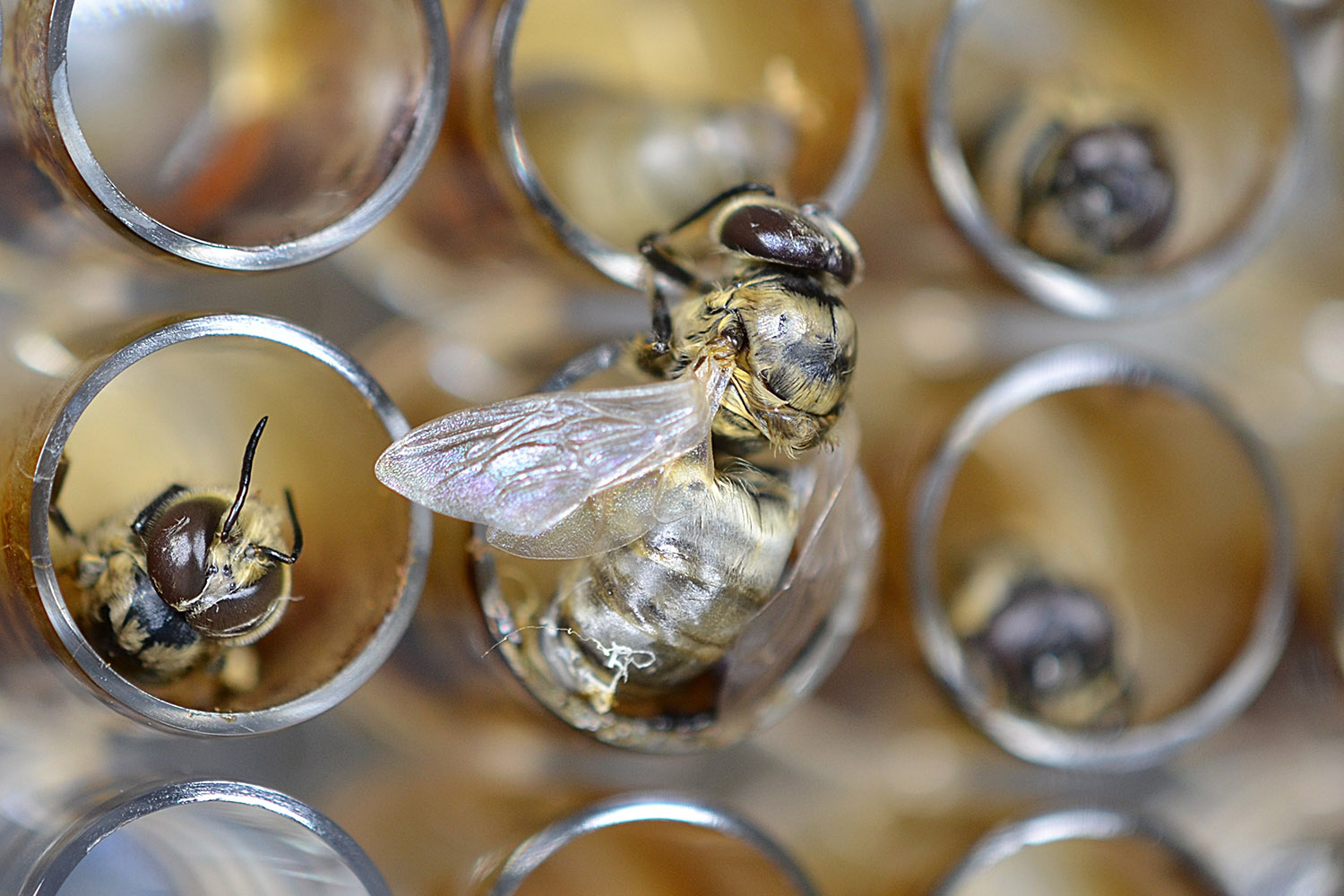
USask announces 2024 Images of Research contest winners
For the 10th year in a row, University of Saskatchewan (USask) researchers, scholars and artists have showcased the impact of their work using the power of photography. The results are nothing short of amazing and provide an inside look into the beautiful world of research.
By Lindsay Herman, Research Profile and ImpactOrganized by USask’s Research Profile and Impact team, the Images of Research contest is an annual celebration of the beauty, diversity and impact of USask research. This year’s contest featured more than 100 entries across five categories, with winning images selected by seven multi-disciplinary panels of judges, and over 2,800 public votes. The contest was viewed online over 16,000 times.
Submitted images represent the research, scholarly and artistic works of 14 USask colleges, schools and research institutes. Entries by students, staff, faculty and alumni demonstrate the unique ways that USask research is addressing local and global challenges.
View all winning and runner-up images here and all 2024 submissions here.
Grand Prize: “A Curious Male Honeybee”
Submitted by: Dr. Marina Carla Bezerra da Silva (DVM), PhD student, Department of Veterinary Pathology, WCVM
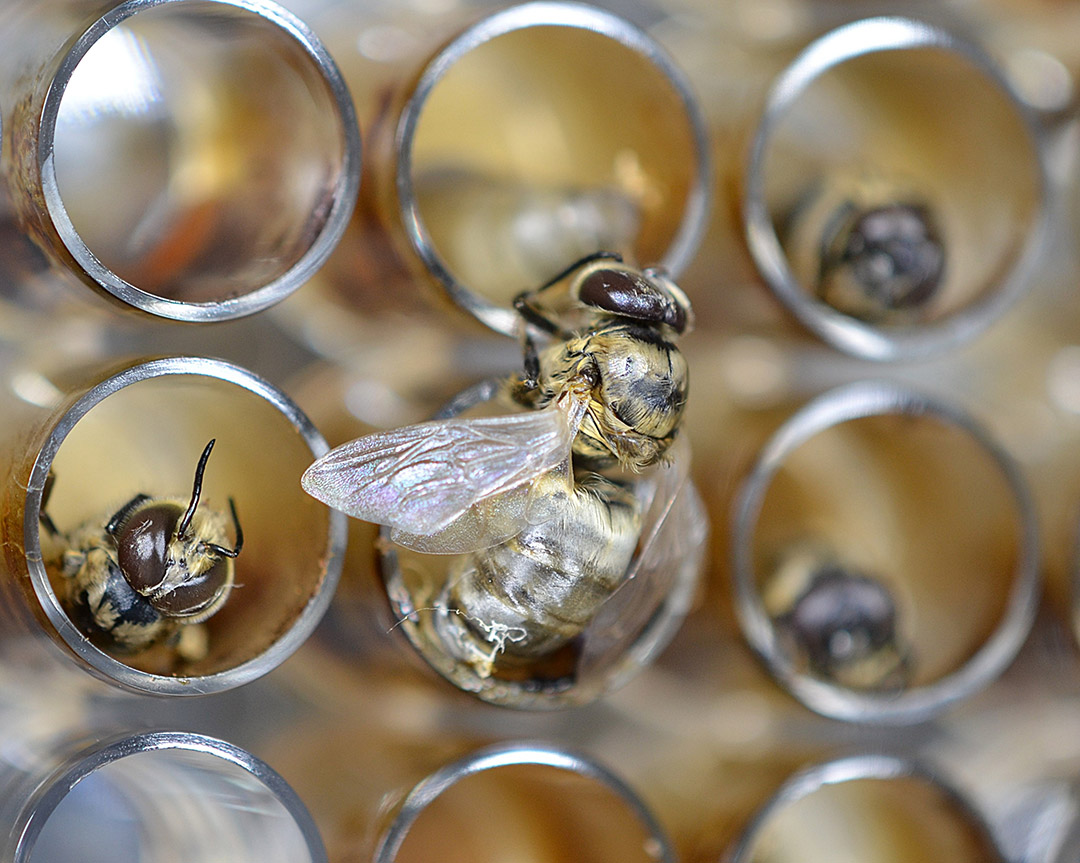
Did you know that worker honeybees are the only bees used in agrochemical risk assessment? Although the queen and drones are in charge of reproduction within the hives, only the workers are subjected to the toxicological risk assessment. An excellent in vitro toxicological exposure for workers is currently available for researchers. Over the past few decades, many studies that attempted to raise male honeybees in vitro have failed; however, a successful in vitro protocol for rearing male honeybees for future agrochemical risk assessment was developed in our lab in 2023. This stunning image shows the first curious male honeybee emerging from the plate in the lab instead of its usual wax comb. So, what is the male honeybee looking for?
Funding: Mitacs, Bayer, Interprovincial Undergraduate Summer Research Award (IUSRA), Saskatchewan Beekeepers Development Commission, Manitoba Canola Growers, SaskCanola, British Columbia Blueberry Council, BASF, personal Dean’s scholarship.
Arts in Focus: “Wakiŋyaŋ Tuŋwaŋpi (When you see lightning but don’t hear thunder)”
Submitted by: Raina Buffalo Pechawis, undergraduate student, Department of Art and Art History, College of Arts and Science
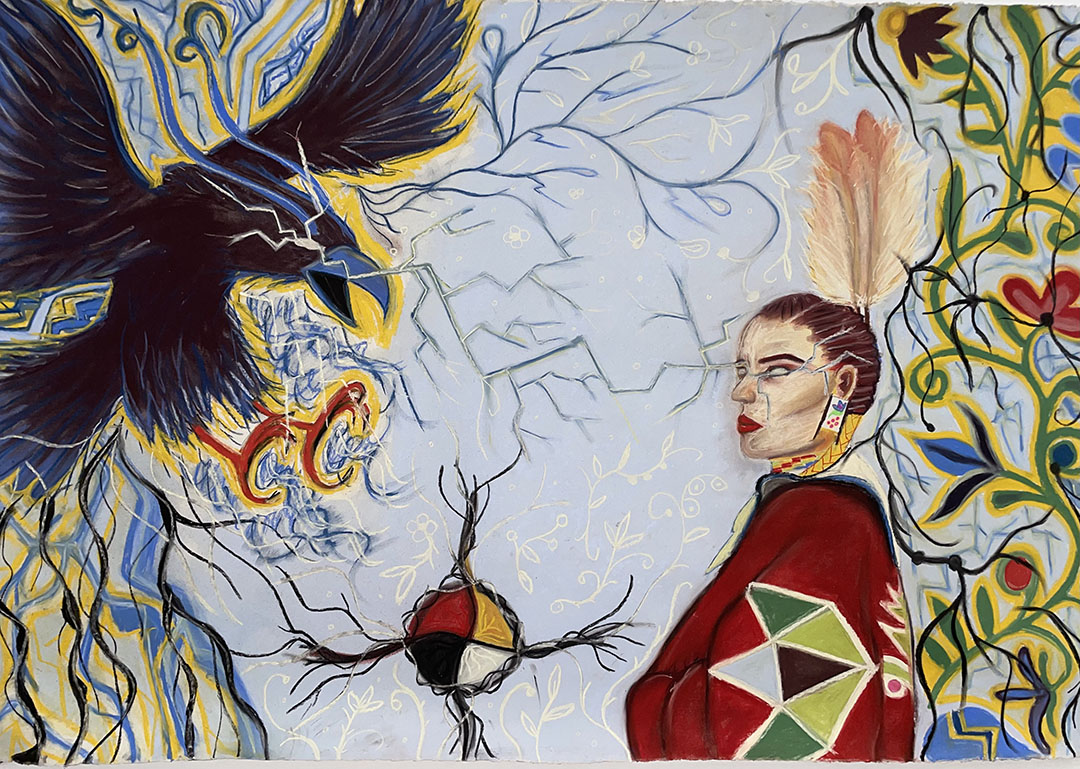
My drawing is based on research of neurographic art and my cultural experience. Neurographic art is meeting with your unconscious and the drawing process is based in mindfulness. It should be a meditative process, diving deep into the mind, avoiding rational thinking and letting your hands draw freely. I drew myself with a mythical being called the thunderbird from my Dakota culture. They represent power, strength, protection, and they create the thunderstorms to bless the earth. I wanted to incorporate my spiritual consciousness that I feel when I pray to the creator, and when I dance Powwow. In the drawing the thunderbird and I are connecting through the lightning coming from our eyes, representing the connection I have with the spiritual world, and Mother Earth. I was taught we are all connected, and we go through cycles which is represented with the medicine wheel.
Community Impact: “Fire Season Reflections”
Submitted by: Lindsay Carlson, PhD student, Department of Biology, College of Arts and Science
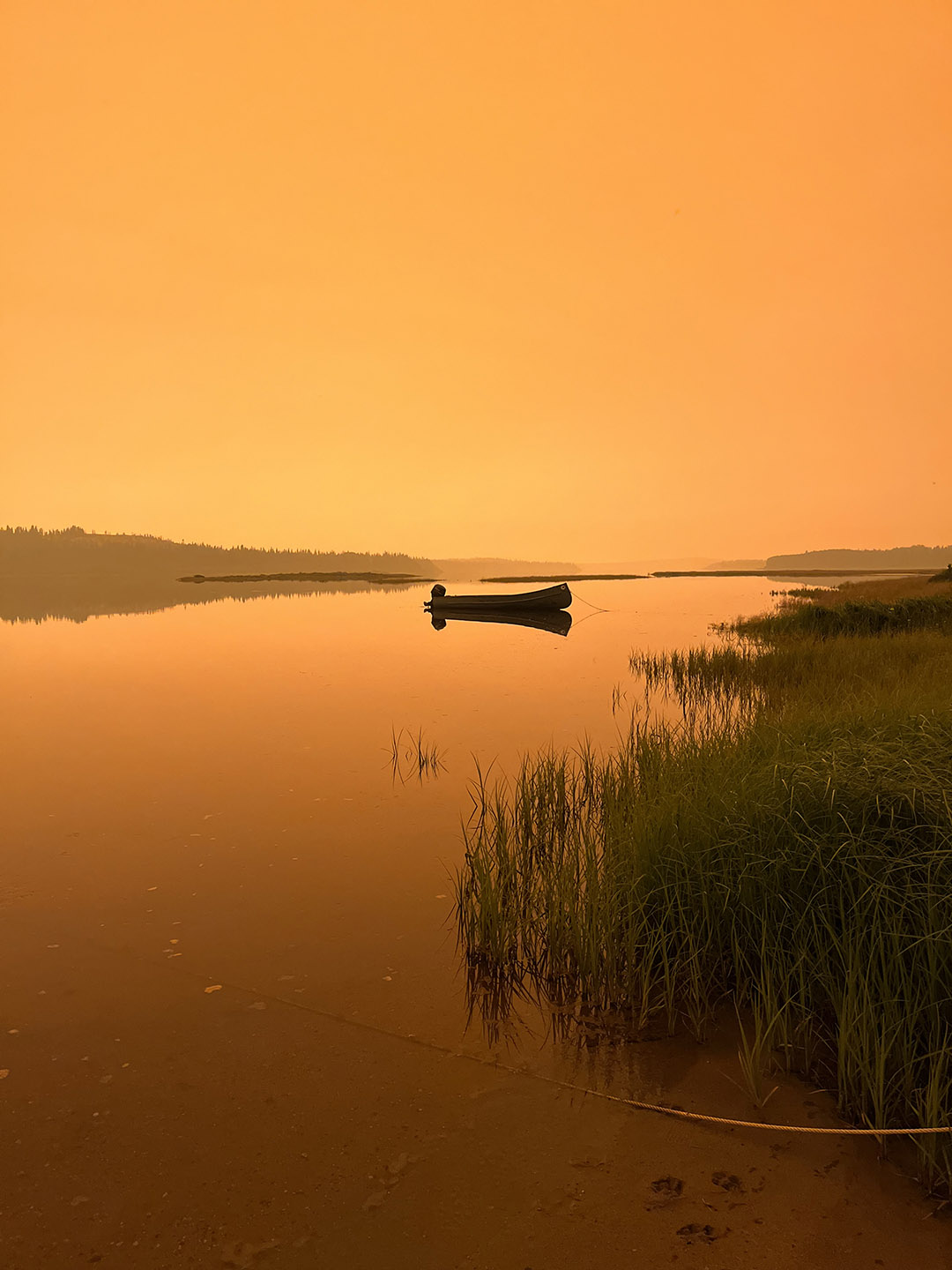
Cree communities in eastern James Bay have a strong connection with the land, waters, and animals of Eeyou Istchee (the People’s Land). During the summer of 2023, wildfires raged across Quebec’s boreal forests. The communities were cut off from the rest of the province when fires started along the Billy-Diamond Highway. Due to poor air quality conditions and without gas, food, and other necessary supplies entering the communities by road, tallymen and land users were unable to fish and hunt for much of the summer, and many traditional summer gatherings and activities on the land were cancelled. Some communities were evacuated completely. In this photo, a freighter canoe sits unused along the shore of the Maquatua River in Wemindji, QC.
Funding: Niskamoon Corporation, Eeyou Marine Region Wildlife Board, Arctic Goose Joint Venture, Ducks Unlimited, Dr. Bruce D.J. Batt Fellowship in Waterfowl Conservation
More than Meets the Eye: “Worm Hurricane”
Submitted by: Amir Sabeti, PhD student, Department of Biology, College of Arts and Science
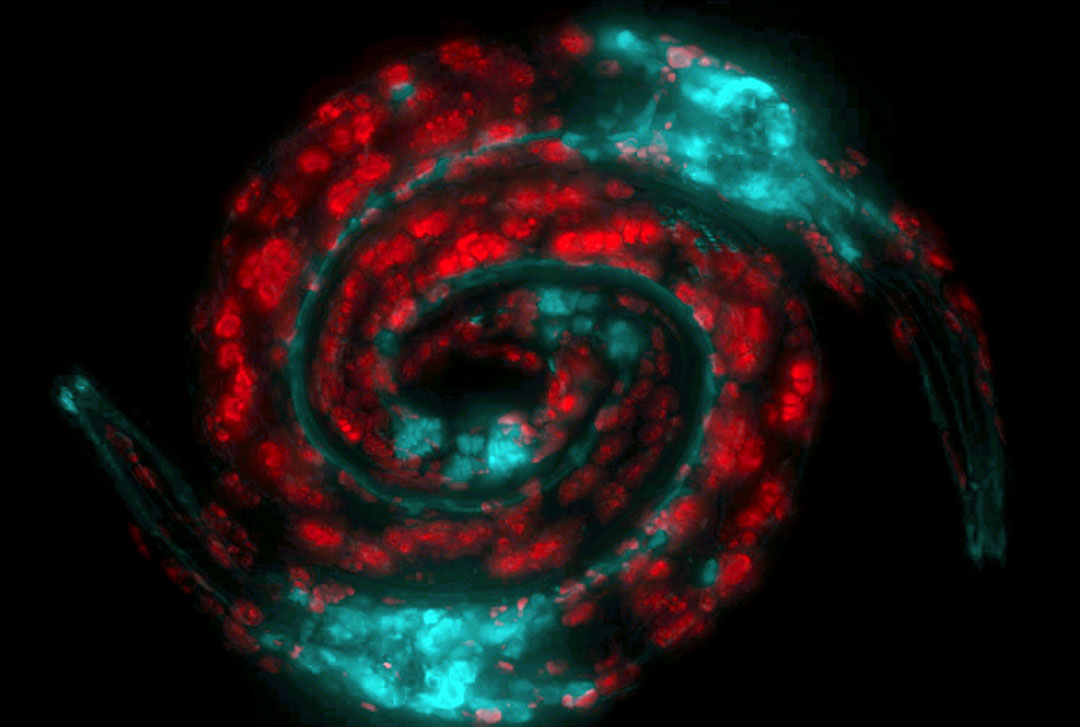
Image of two nematodes (C. elegans) in an embrace. These transgenic worms have two fluorescent reporters that show the cells in the worms that produce two different versions of the hypoxia-inducible factor 1, a critical protein that protects cells against stress (HIF-1a in red, HIF-1c in blue). The head of the worms are on the outside, where the ‘brain’ and most neurons lie (blue). The two tails meet in the centre (where the posterior ganglia are located). Red marks the nuclei of all cells in C. elegans.
Funding: Natural Sciences and Engineering Research Council of Canada (NSERC)
Research in Action: “Unveiling Arsenic: Protecting Fish and Humans”
Submitted by: Mahesh Rachamalla, PhD student, Department of Biology, College of Arts and Science

Fish are vital for maintaining the delicate balance of aquatic ecosystems and meeting our dietary requirements. However, the influx of pollutants from increasing economic activities poses a grave threat to both fish and human health by contaminating water bodies. My research delves into the pervasive presence of arsenic, a prevalent pollutant, and its adverse effects on fish health and fitness. By gaining insight into the impact of arsenic, we strive to strengthen regulatory measures, effectively limiting its release into water bodies. This endeavor is crucial for preserving the integrity of aquatic ecosystems and ensuring the well-being of both aquatic life and human populations.
From the Field: “Family of Fungi”
Submitted by: Olivia Yurach, MSc student, Department of Soil Science, College of Agriculture and Bioresources
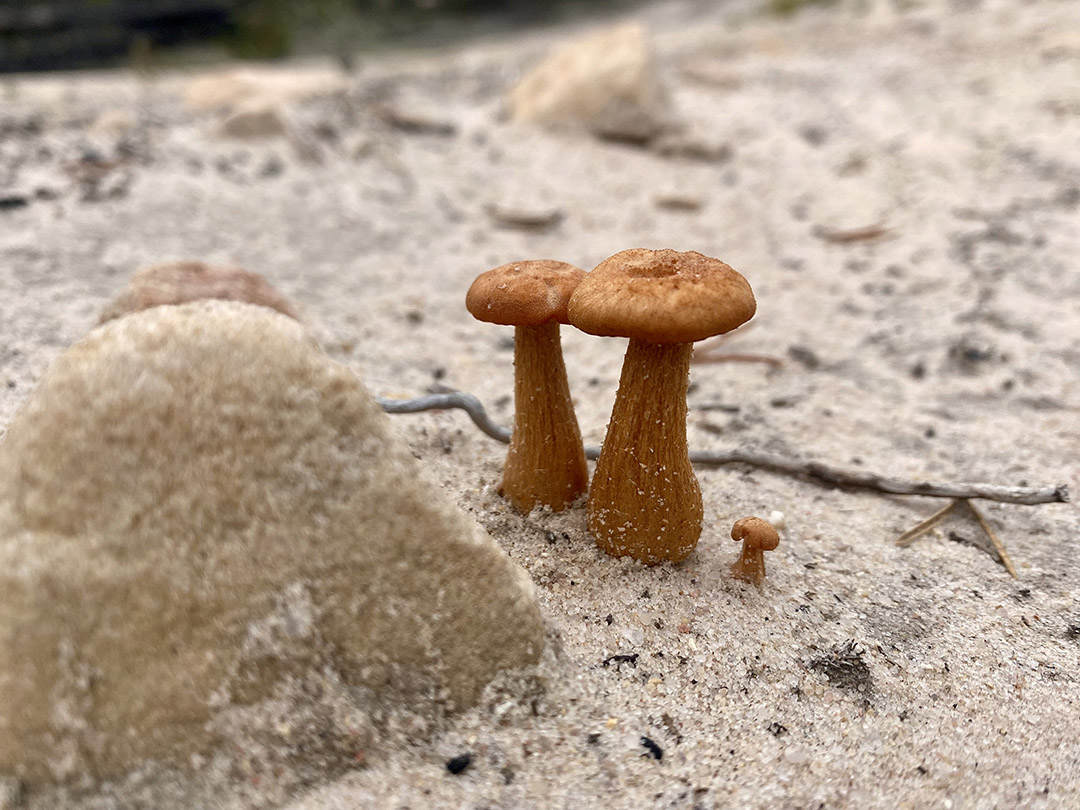
In northern Saskatchewan, ecological restoration research is seeking to understand recovery post-disturbance. These mushrooms were spotted while collecting blueberry seeds for propagation so we can study the role moss and blueberries have on boreal soil systems.
Best Description: “Ice Ice Baby”
Submitted by: Dr. Kayla Buhler (PhD), alumnus, Department of Veterinary Microbiology, WCVM
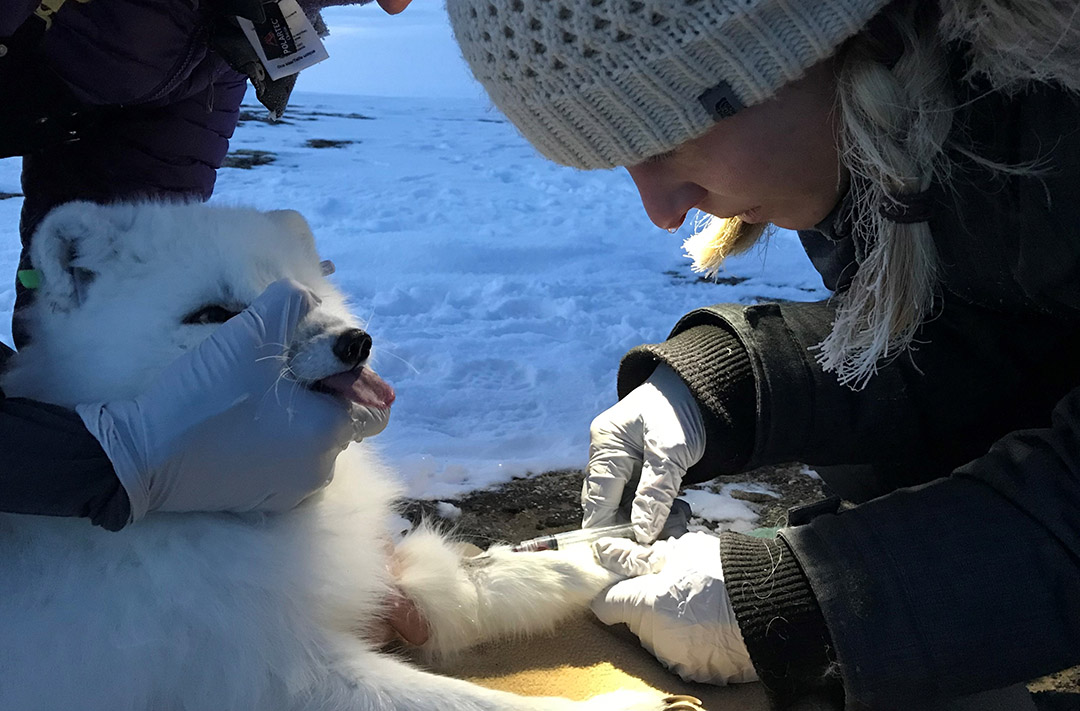
Everything about this photo screams COLD! This was taken during my second field season, where we were working on screening Arctic foxes for a variety of climate sensitive diseases. The icicles on my hair and nose testify to the weather conditions, which were approaching -30°C. Have you ever tried to take blood in freezing temperatures? It’s no small feat, as the blood freezes in the syringe while it’s collected. As for the fox, she fully recovered after light sedation. She was much more comfortable than the researchers surrounding her, with her thick layer of fur and having evolved to living in arctic conditions. All for the love of science!
Funding: Weston Family Foundation, ArcticNet, NSERC
Viewers’ Choice: “Cutest Research I Do!”
Submitted by: Mihiprabha Rathnayake, PhD student, Department of Veterinary Pathology, WCVM
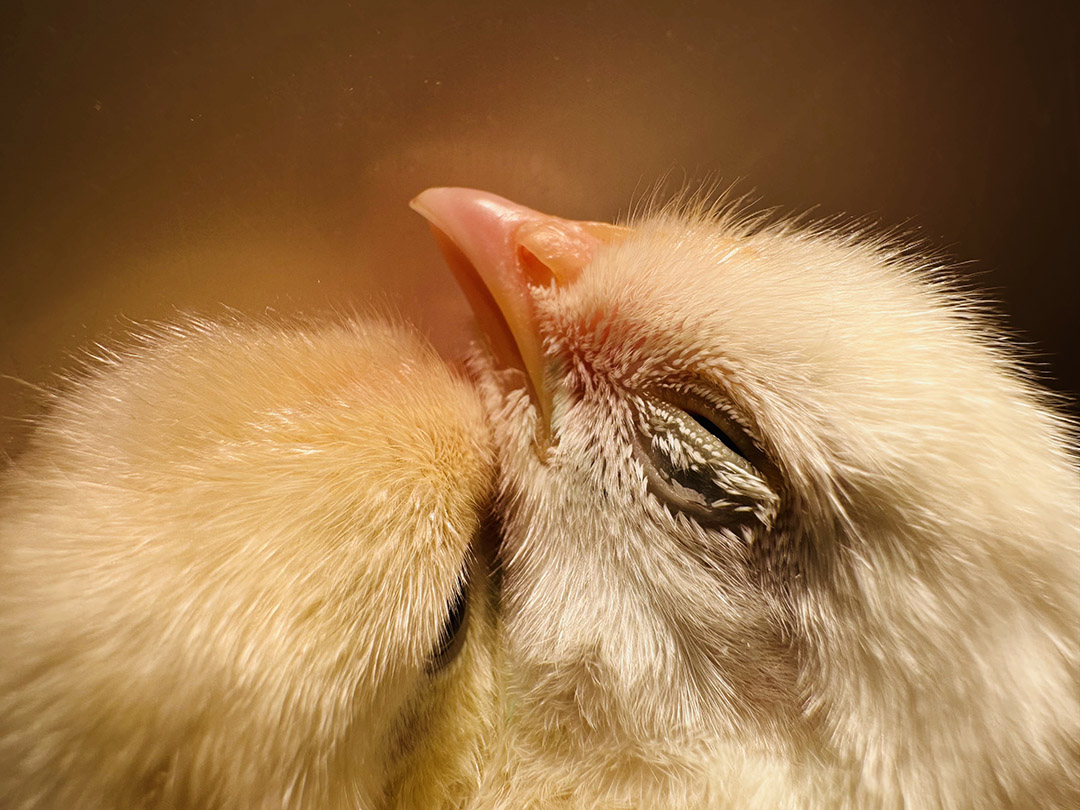
Happiness overtook me, when I saw my cute research partners it sprinkled a feeling of comfort over me; consolation and protection all over the dark and warm brooder room. Without even realizing it, they are partaking in a project that can save the world, specifically, solving the antimicrobial resistance issue that is negatively affecting people, animals and the environment. Prodigious tiny creatures in the planet called “probiotics” can protect chicks from infectious diseases by colonizing the guts of chicks, even before they are hatched. Without any hesitation, say “Good-Bye!!” to antibiotic use in the poultry industry and cheers to the cutest research I do!
Funding: Canadian Poultry Research Council, Result Driven Agriculture Research, Ministry of Agriculture - Government of Saskatchewan
Article re-posted on .
View original article.
Together, we will undertake the research the world needs. We invite you to join by supporting critical research at USask.

